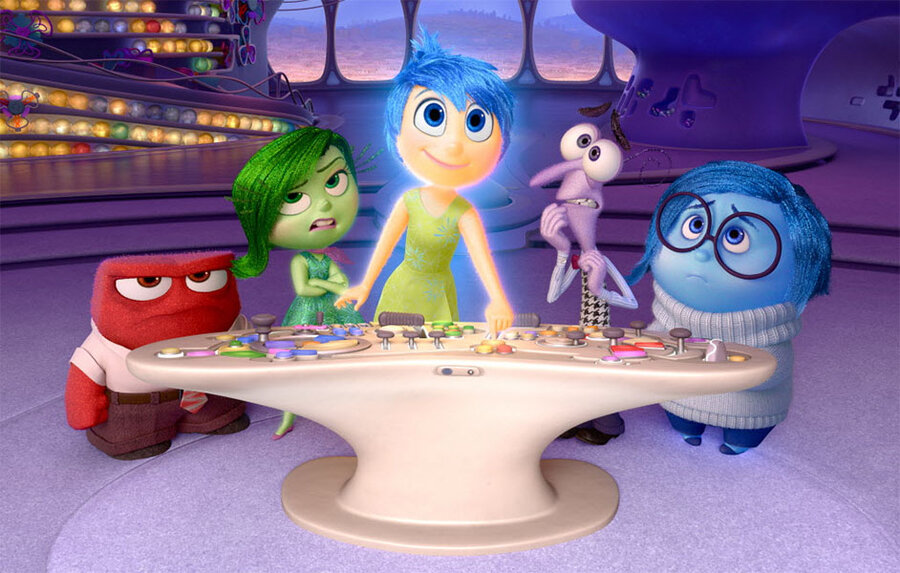2015 in review: Here's what mattered in entertainment this year
Loading...
Over the noise of the many summer blockbusters and the confusion of the seemingly endless TV options now available to consumers, it can sometimes be difficult to parse out the meaningful advances or changes in entertainment.
But almost every form of entertainment this year saw some progress or experienced a moment that could affect thinking in that medium for years to come.
As diversity in front of and behind the camera continues to be an issue in movies, TV, and in other areas of entertainment, this year saw actress Viola Davis become the first black actress to win the Emmy Award for lead actress in a drama. Ms. Davis took the award for her work on the ABC drama “How to Get Away with Murder.”
In anything like diversity, there's still always farther to go. But GLAAD noted in its report of the 2015-2016 TV season that broadcast TV, where “Murder” finds its home, experienced an increase in racial diversity from the year before and that the percent of series regular characters of color on broadcast TV had increased 10 percent from two years ago.
The number made GLAAD sit up and take notice. “It seems that networks are finally making serious strides towards more diverse representations,” the organization wrote in its report. GLAAD singled out NBC, which is the home of such new shows as “Telenovela,” “Shades of Blue,” and “Superstore,” as having the best representation of people of color on its primetime fictional programs.
Sitcom writer Ross Brown, who worked on programs including “The Cosby Show,” called the increase “small” but says success, like that experienced by the Fox show “Empire” with its mainly African-American cast, speaks the loudest to broadcast networks.
“These [networks] are all businesses,” he says. If a show like “Empire” succeeds, all the networks will be saying, “Get me the next one,” according to Mr. Brown.
We’ll see in the coming year how the success of “Empire” plays out when it comes to networks ordering new shows.
As for other TV, this year’s Emmy Awards – often considered the most prestigious prizes in television – showed that cable shows continue to dominate but that streaming programs now have an important place in Hollywood, too. This year saw Amazon’s program “Transparent” snag a best lead actor in a comedy award for actor Jeffrey Tambor and a best directing award for Jill Soloway. Those categories are considered to be major awards.
As Netflix, Amazon, and other services like Hulu continue to produce high-profile shows, expect to see their presence only increase at awards shows like the Emmys. It’s not just the cable party anymore.
Speaking of streaming, music streaming services like Spotify continue to be at the center of the conversation. Late last year, Billboard made the decision to take data like streaming numbers into account when reporting their chart coverage. Since then, the benefits and drawbacks of these services, including how much they pay their artists, have continued to stir discussion.
But this year, one artist showed that she didn’t need streaming to succeed. Adele, coming off her smash hit 2011 album “21,” released “25” this year and it’s already broken album sales records, all without appearing on a platform like Spotify or Apple Music. Her single “Hello” is available on these but the full album is not.
Adele is somewhat of a force unto herself with her massive popularity. Could another artist replicate at least some of this success while keeping his or her music off streaming? Following Adele’s move, some are bound to try.
In Hollywood, some have long bemoaned the popularity of sequels. Over the past several years, we’ve also seen the rise of “reboots,” where studios reinvent the same story with a new cast (for example, the multiple attempts at bringing comic book character Spider-Man to the big screen, with a third actor recently cast as the webslinger).
But one studio is still scoring at the box office with originality. While animation studio Pixar is releasing more sequels now than it used to, with follow-ups to its films “Finding Nemo” and “The Incredibles” on the way, Pixar scored big this year with the film “Inside Out,” which tells the story of the small creatures living inside a young girl’s head. The movie received rapturous reviews (some are wondering whether “Inside” can make the cut for a Best Picture Oscar nod) and became the second-highest-grossing Pixar film of all time domestically.
Another of the highest-grossing films of the year, and another that could become an Oscar contender, is the science fiction film “The Martian,” which finds an astronaut stranded on Mars and his co-workers on Earth banding together to try to bring him home.
Science fiction can be full of dystopian visions of the future, but the story of “Martian” saw others making sacrifices to attempt to bring their friend back safely.
It’s a trend that’s reflected in recent sci-fi blockbusters like 2014’s “Interstellar” and 2013’s “Gravity,” both of which also contain hopeful themes. “Interstellar” has a scientist figure out how people can survive outside Earth, while “Gravity” protagonist Dr. Ryan Stone overcomes almost overwhelming odds to get back to Earth after becoming stranded in space.
Despina Kakoudaki, director of American University’s humanities lab, tells The Christian Science Monitor in an interview there are “these very positive images of collaboration” in these movies.
Stories like “Martian” in which, for example, astronaut Mark Watney’s crewmates decide to turn around and help him rather than go back to Earth, look at “ethics and what we owe each other” as people, Ms. Kakoudaki says.








